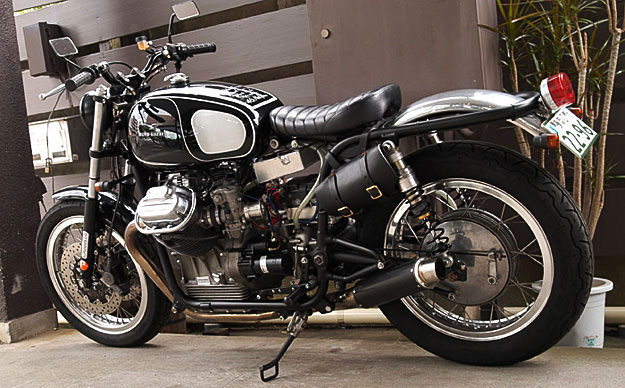YAMAHA SR400 BY LUXE MOTORCYCLE
Luxe is one of the smaller Japanese custom builders. They’re based in a little white-painted wooden workshop at the foot of Mount Akagi, and like most of their ilk, stick to the four staple ingredients of the Eastern scene: the Yamaha SR400, SR500 and XS650, and the Kawasaki W650. But they’re not afraid to try something different once they get their hands on those bikes.
This Yamaha SR400 is owned by a Mr Su-Tarou, and it bucks the trend for dark, monochromatic styling. The paintwork has a sunkissed, retro feel—Orangina colors balanced with flashes of red on the rear brake drum, flashers, grips and … that extraordinary muffler. Mechanical mods include a tuned SR500 engine, uprated Kehin caburetion, an underseat oil tank and upgraded front brakes. Just the thing for a leisurely blast along a coast road on a warm summer’s evening.


































